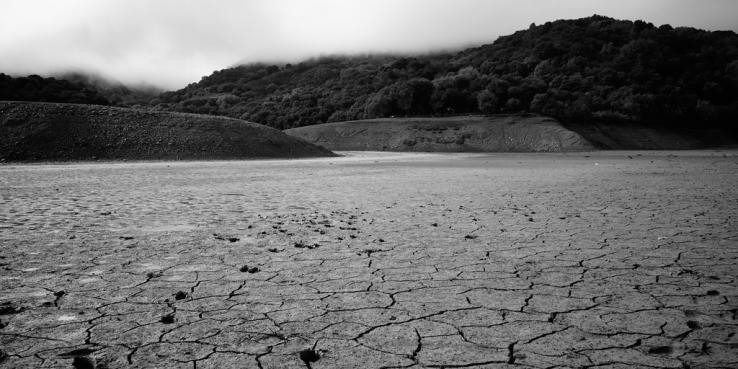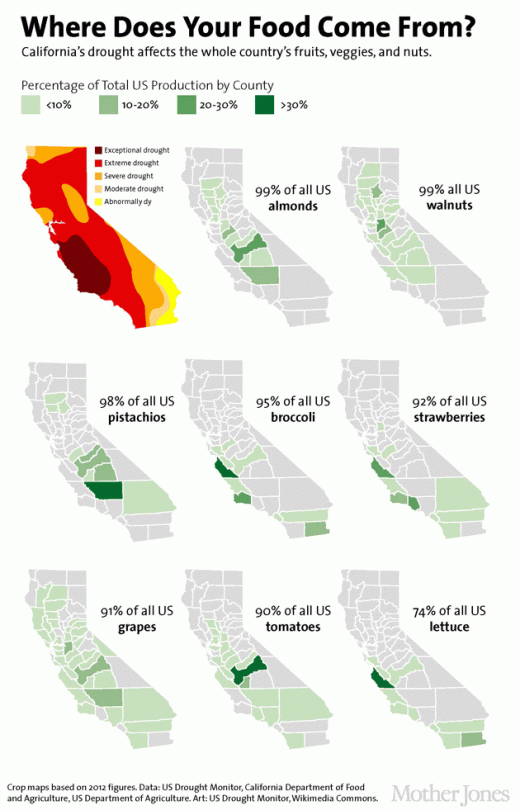Despite the inches of rain that fell in February, California’s farmers and ranchers are still facing a severe drought. Mother Jones magazine recently published an infographic (reproduced below) that clearly illustrates the geographic link between the lack of rain and the state’s agricultural economy. And what it conveys is that this is going to be a hard year for farmers and ranchers in California, with ripple effects for the whole country.
Some early indications of the drought’s impacts on California agriculture are already starting to surface. Marin Sun Farms, a local meat producer, does not have enough pasture for its signature product, grass-fed beef, and has started introducing imported grain into the diet of its cattle. Belcampo Meat Company, another Northern California grass-fed beef producer, is considering trucking its cattle as far away as the Dakotas in order to find reliable pasture. Meanwhile, Strauss Creamery was one of many dairies in Marin and Sonoma counties that joined the call for a emergency reprieve from organic standards requiring that dairy cows spend a certain number of days each year eating grass, which was subsequently granted by the USDA.
Though these reports reveal some of the immediate impacts of the drought, its longer-term impact is not yet clear. Economically, the drought will result in lower sales, higher prices or both. As a recent Food and Environment Reporting Network article noted, it’s likely that dairy farmers, many of whom are “price takers,” will get squeezed as larger milk processors continue to pay them the same price for milk even as the cost of producing that milk increases because of the drought. For vegetable growers, who have a bit more flexibility than beef and dairy producers in changing their crops season by season, it’s not year clear how the drought will affect their bottom line, nor how it will affect the price of produce in California and nationwide. Though, as the Mother Jones graphic implies, with California growing much of the nation’s produce, a reduction in harvests will likely raise food prices to some degree.
On a broader scale, it’s unclear whether the drought will shift agricultural practices regarding the use of water in our arid state. The East Bay Express recently featured the controversy surrounding the increase in almond cultivation in the very dry western San Joaquin valley. As the article explains, “almonds, in short, aren’t cut out for droughts.” In areas of the state that receive more rain, including near Sacramento and even in the eastern and central San Joaquin Valley, almond production is not as threatened as it is in the western part of the valley. Almond orchards, like numerous other crops, require multiple years of investment, and this multi-year drought may change the business calculations farmers use when choosing what to plant.
The drought is going to up end the economics that California’s agricultural sector has depended on for years. Instability in the coming years is all but certain. But what becomes the new normal in terms of what we grow and how we grow it is anything but clear.

